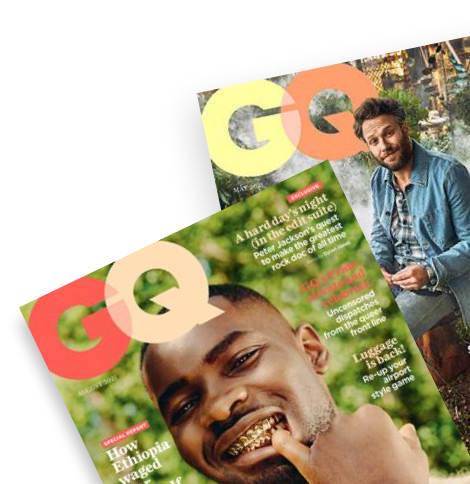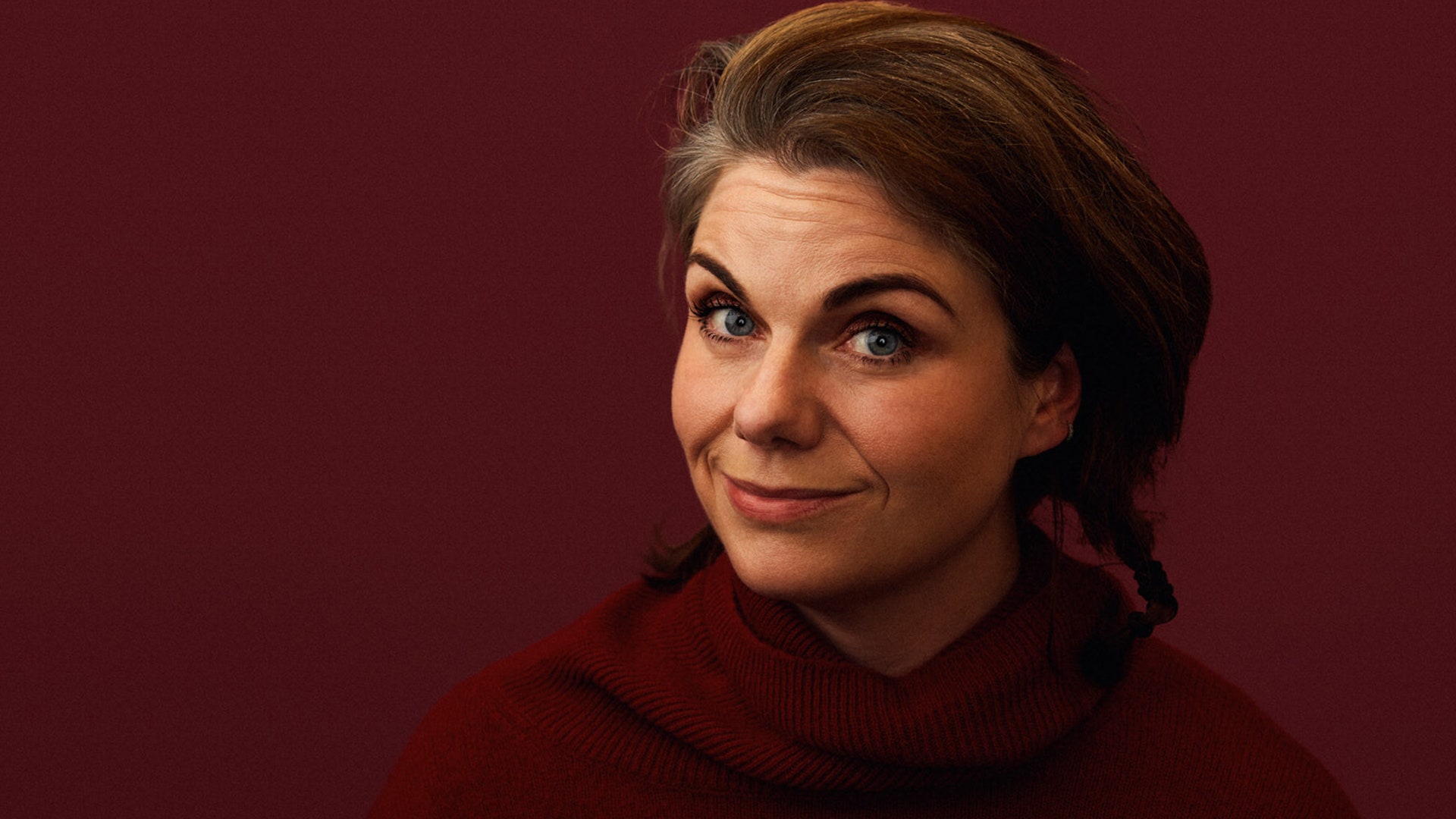“You dropped a bollock,” Caitlin Moran says, leaning forward across the table, her eyebrow and lip arched in perfect synchrony.
She doesn’t mean me specifically, more the men I represent: liberal, white, straight, university-educated; broadly speaking, quote-unquote, nice. Men so discombobulated by #MeToo that we’ve spent the past six years with our mouths shut, ostensibly to “listen” but also, really, to recalibrate, to try and make sure we don’t mess up any further. Men who have spent the better part of a decade now saying stuff like, “I don’t even read male authors anymore,” while quietly replacing our copies of Michael Lewis and William Faulkner with bell hooks and Bernardine Evaristo; who spent way too long editing our tweets about why we loved Fleabag or I May Destroy You to make sure they don’t accidentally sound like mansplaining; who have learned to always look down at the gym and to speak a little less in meetings, all while silently prodding memories of times we were not great dudes to women – not terrible, but not great – the way a tongue bothers an ulcer.
Of course, it hasn’t all been self-serving. There has been a genuine desire to get things right. But while we have embarked on this anxious self-corrective, Caitlin Moran argues in her bracing and typically very funny new book What About Men?, some of us stopped paying attention to what was happening in our own back yard, and the litany of ways men are now suffering, which Moran lists out to me in a flurry of indignation.
“More likely to underachieve at school; to fail to go on to further education; to be medicated for destructive behaviour; to make up the majority of the prison population and the homeless; to be addicted to drugs; to die earlier – including by suicide.
“I really thought a man would have written [this type of book] by now,” she goes on. “But they just continued not to. Then when my daughter started saying that the boys at their school think feminists are Nazis, I thought, Fuck it, I’m going to have to do it myself.”
The pub Moran suggests we meet in is a comically tatty and run-down boozer on a quiet street in Finsbury. The windows are smeared with something unidentifiable – grease? Smoke? The sighs of a thousand broken dreams? – meaning you can’t see in or out. It seems a perfect setting to talk about the ways in which masculinity has been allowed to fester and become unfit for purpose. But a quick look inside reveals there is no one even manning the pumps, so we sack it off and head to the nice air-conditioned bar playing cheery pop music over the road instead.
Moran tells me the other motivation for writing the book. “I can't remember the last time I read anything about men that was joyful and friendly and respectful,” she says. “There are no lists of ‘50 young men to watch’. There's no playlist about how great it is to be a boy. I had that realisation that even saying ‘straight white man’ looks inherently problematic or dodgy. Everything I was reading that talked about them used the same kind of peevish language – ‘fuck these guys’, ‘what do they have to complain about?’ – that people used to talk about women in 2010.”
When I started out in journalism during that period, everyone wanted to be Caitlin Moran. Or, at the very least, we wanted to write like her. In broadsheets still dominated by stern-looking men writing in a pompous, paper-of-record voice, she did – and still does – what only the very best do, which is write pretty much as she speaks (with gusto, at speed, peppered with great gags). Apart from AA Gill, who died in 2016, no British columnist of her generation could touch her.
Then in 2011, How To Be A Woman came out, and Moran’s fame widened from Times readers and aspiring journalists to, well, everyone. The book captured the nascent spirit of fourth-wave feminism, somehow building a bridge between the hope of ’90s girl power and the anti-sexism fury finding its feet on Twitter. It was funny and accessible without sacrificing a jot of righteous anger, and it sold a million copies. It was the gateway drug for a generation of feminists – male and female – and it turned Moran into someone people stopped in the streets to share their stories of prejudice and heartbreak and lost teenage daughters.
All of this makes her decision to write a book from “the other side” both strange and strangely inevitable. She is right; the job of writing a funny, accessible book about the issues facing men today should have come down to a man. And yet a paradox of where we’ve got to is that it feels like only a woman could have done it and been noticed. There have been attempts to analyse the identity crisis facing men and map a way out of it – but they have mostly been earnest self-help books and memoirs by famous people, both of which speak to a limited audience. For the well-meaning men in the middle, the apprehension Moran describes is real. This can result in some surreal overthinking: the other day I thought long and hard about posting a video I saw, and found beautiful, of a man hugging his son in a football stadium after he caught a player’s shirt that had been tossed into the crowd – in case it came off as vaguely “men’s rights-y”.
“We're scared to go near it,” Moran says. “It's become really febrile. People are really divided. There's a really uncomfortable silence where the middle ground should be, and that's where Andrew Tate started.”
Ah, yes. One of the tricky things Moran has to navigate is that her talking points about why men are in peril put her in strange company with those bogeymen currently stalking our classrooms: Tate, Jordan Peterson and a thousand imitators of their psuedo-intellectual schtick who ooze down TikTok’s FYP like an oil spill, coating our teenage boys’ brains with muddled convictions about “body counts” and the “proper” role of women alongside dubious advice about stock trading and how to bench press. Anyone who has been longing to read a proper, funny takedown of either charlatan will find much to enjoy in What About Men?; Peterson in particular brings out the ferocious best in Moran’s writing.
“I didn’t go to university, but when Time magazine is calling [Peterson] the most important intellectual of our time, I’m reading his book going: ‘No! This is either stuff pulled from other people or stuff your Mum would say!’” she says, “undercut with the fact that he's a very depressive, fundamentalist Christian whose Twitter feed just tells you where he's at now – it's all climate denial, rampant, really awful transphobia and this belief that Justin Trudeau is somehow the Antichrist.”
We return to her original point, about who has paid the price while the conversation around men has soured. “The stakes in this are teenage boys. To men and women of my generation, it’s a recent corrective that feminism is so positive – women are the future! Beyoncé! Feminist clubs and vagina merchandise on Etsy! We don’t realise that for 15-year-old boys, that’s all they’ve grown up with. For them, they’re going ‘When was the last time anyone said anything good about boys?’”
Nothing visits misery upon the world like a young man who hates himself. In the end, if there’s a self-esteem crisis developing among men, people of all genders will bear the load of it. In the suicide epidemic, for example, which is the biggest killer of men under 50, it is often female relatives who are left to pick up the pieces. Over the past decade, it has sometimes felt like we’ve lost sight of how interconnected our fates are. Men have benefitted hugely from women becoming more empowered over the past decade. It’s resulted in better conversations, stronger workplaces, plenty of great art. If we can find a positive narrative for men – a way to make just being a man something to celebrate, without leaning into the regressive cruelty of Tate – maybe we can start to return the favour.
Moran suggests the answer isn’t to reverse feminism but to be inspired by it: for men to get our own adjacent little thing going. “Feminism isn’t a set of rules about women,” she says. “It's a set of tools for understanding gender. So if we want to reinvent men, you go and look at these tools that we invented that allow you to go: is this because of my gender? Why is this a problem? I don't like these clichés about my gender.”
Moran’s attempts to kickstart this positive narrative around men make up the bulk of the book. While some sections feel more aimed at providing eureka moments for middle-aged mums – chapters on “The Cock and Balls of Men” and pornography cover ground we’re pretty familiar with, thanks very much – What About Men? ends with a list of characteristics she has decided, with the help of her Twitter followers, are typical of men when they are at their best. It includes things like “nonjudgmental”, “protective”, “brave”, “joyous” – before Moran realises she’s been describing a dog.
This passage – which recently ran as an extract in The Times – has already attracted a backlash to the book, an early sign of the choppy water Moran is about to swim into. For what it’s worth, the dog line made me laugh out loud, and realise how much we’ve desperately needed some levity in the conversation around masculinity. It’s all become so loaded, so tense, so joyless.
Since How To Be A Woman, Moran has, in her own words, been “cancelled 20 times”, her politics found wanting by younger generations. Others this week have already pointed out that not all well-meaning men have spent the past decade sitting on their hands – many have started organisations and charities aimed at tackling the crisis facing young boys. Moran is not inventing the idea of a positive conversation around men any more than she invented feminism in 2011. But what her book does, I think, is give a green light for the discourse to get a little lighter, a little more human, a little less po-faced and uptight and – frankly – scared.
“Women are at peak ‘Don't give a fuck’ at the moment,” Moran says. “You are so richly rewarded if you find a taboo and bust it. Women have found the perfect tone to that, which doesn’t hurt anyone. Men haven’t found that yet.”


